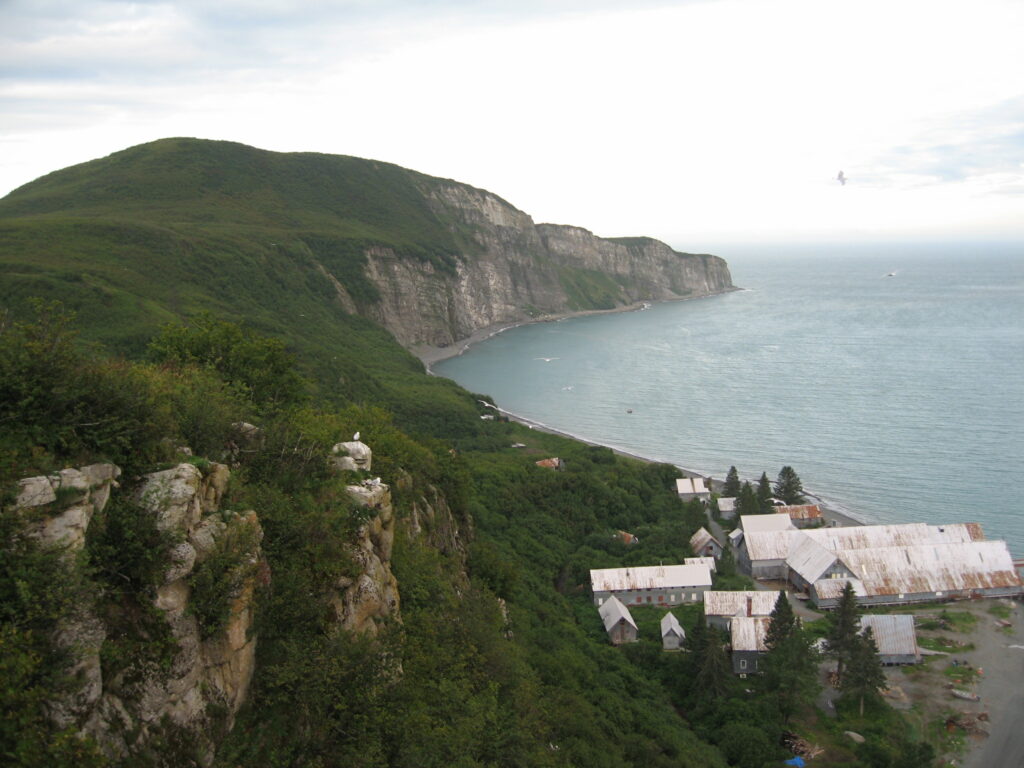The Snug Harbor Cannery is located on the southwest edge of Chisik Island, at the mouth of Tuxedni Bay, on the west coast of Cook Inlet in Southcentral Alaska. The 19.64-acre industrial complex is considered historically significant for its association with Cook Inlet’s commercial razor clamming and salmon fishery and for its association with the Fribrock family, pioneers of a second wave of commercial canning in Cook Inlet, Alaska.
Katie Ringsmuth, a state historian with the Office of History and Archaeology said it was the cannery’s family owned roots which made it of particular significance. “It’s important because Snug Harbor represents the kind of smaller iteration of salmon canning in Alaska, the more mom and pop style of operation. And that’s why the cannery was also significant not just for its association with the Cook Inlet Fishery, but also the Fribrock family that managed the cannery.”
The 104-year-old-cannery also boasts a history of progressive diversity of hiring. A diverse canning crew included women from its early years, local Alaska Natives, Filipinos, farm boys from Matanuska Colony and drift boat fishermen after the new State of Alaska banned fish traps in 1959.
Ringsmuth found the roles women played in the history of the cannery of particular note. “Women [served as] clam canners, women came and served as wives to the winter watchman, and then also [there were] women workers who worked in the cannery later,” she said. “Dorothy Fribrock herself raised her children and later grandchildren, who [also] went to Snug Harbor.
The Snug Harbor cannery property is owned by a local family, who repurposed the cannery into a wilderness lodge.
According to Ringsmuth, the “historic place” moniker is more than just a title. “When a property is listed on the National Register, that becomes kind of a foundation for historic preservation ventures. So, for example, this is a cannery that’s been turned into a lodge for visitors and tourists and the history all of a sudden becomes a factor in the tourism. Model people come because they want to experience it. So the history and the physical, tangible resources become a value to that asset that helps with economic prosperity of the region.”
The Alaska Historical Commission reviewed the nomination on June 6, 2023, and the Keeper listed the property on September 15, 2023.
Snug Harbor represents the fourth cannery in Alaska to receive national recognition for its historical significance.
Also recognized along with the Snug Harbor cannery was the Karl Hansen House in Port Alexander.
Located on the southern tip of Baranof Island in Southeast Alaska, the Karl Hansen House currently serves as a museum and headquarters for the Port Alexander Historical Society. The century-old building is considered significant for its connections to the salmon industry in the early to mid-twentieth century and includes themes of maritime history and the exploration and settlement of Southeastern Alaska.
It is also considered significant for its association with Karl Hansen and his unique role in the broader mild-cure industry throughout Southeast Alaska.
The Alaska Historical Commission reviewed the nomination on June 6, 2023, and the Keeper listed the property on September 1, 2023.

